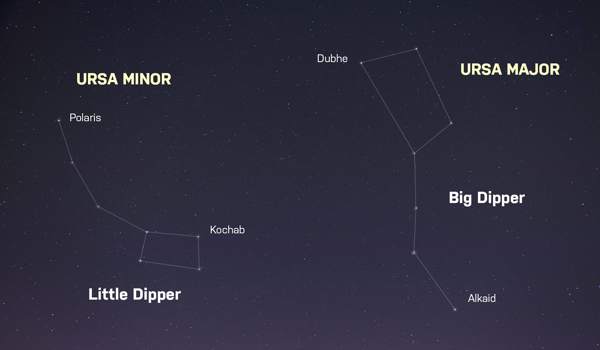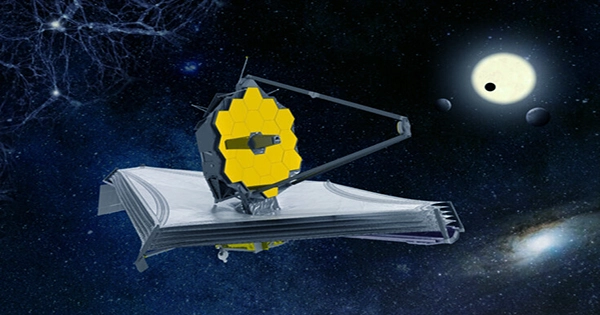Polaris (Alpha Ursae Minoris) is the Pole Star, also known as the North Star. It is the brightest star in the Ursa Minor constellation. Because it is so close to the north celestial pole, it is the current northern pole star. It is almost directly above the North Pole of the Earth. As a result, when viewed from Earth, it appears to remain in the same position in the sky at all times. For centuries, sailors in the northern hemisphere relied on Polaris to determine where they were on the ocean and which direction they were moving.
Polaris is part of a triple star system. It is located in the constellation of Ursa Minor, the Little Bear. It sometimes also goes by the name “Stella Polaris.” It has a very close dwarf binary, and a larger star, Polaris B, which orbits 2,400 AU away. The revised Hipparcos parallax gives a distance to Polaris of about 433 light-years (133 parsecs), while calculations by some other methods derive distances up to 35% closer.
Polaris, the current North Star, is not particularly bright, and certainly not the brightest star in the northern sky. It is almost straight above Earth’s the North Pole. Because of this, when it is seen from Earth, it looks like it always stays in the same place in the sky.
Polaris A, the main star, is a massive star with 4.5 times the mass of the Sun and a diameter of 45 million kilometers. It is the first classical Cepheid whose mass can be calculated from its orbit. It is a typical Cepheid variable, the nearest to us in the entire Milky Way. Polaris B can be seen with a small telescope. In August 1779, William Herschel discovered the star using his own reflecting telescope, which was one of the best telescopes at the time.

It was discovered in 1780 by William Herschel, who used one of the most powerful telescopes available at the time: his own reflecting telescope. Ab, a nearby dwarf star, was predicted in 1929 but was only recently discovered. The dwarf orbits are as close to A as Uranus is to our sun. In January 2006, NASA released images, from the Hubble telescope, that showed the three members of the Polaris ternary system.
Even though Polaris is now the North Star, this was not always the case. The location of the Earth’s north pole in the sky changes slowly over time. This is known as stellar precession. In 3000 BC, the North Star was a faint star called Thuban in the constellation Draco. Polaris was not designated as the North Star until around the year 500. It won’t get any closer to directly above the Earth’s north pole until around the year 2102. Then it will move away once more. Until around AD 3000, it will be the closest star to the pole.
Surprisingly, despite its close proximity, its exact distance is unknown. Many recent papers estimate the distance to Polaris to be approximately 434 light-years (133 parsecs). However, some believe it is as much as 30% closer. If this is correct, it is especially noteworthy because Polaris is the closest Cepheid variable to Earth. Its physical parameters are critical to the astronomical distance scale as a whole. Polaris’ temperature varies only slightly during its pulsations, but the amount of variation is variable and unpredictable. Polaris is the only star in the southern hemisphere that serves a similar function.
Information Source:
















